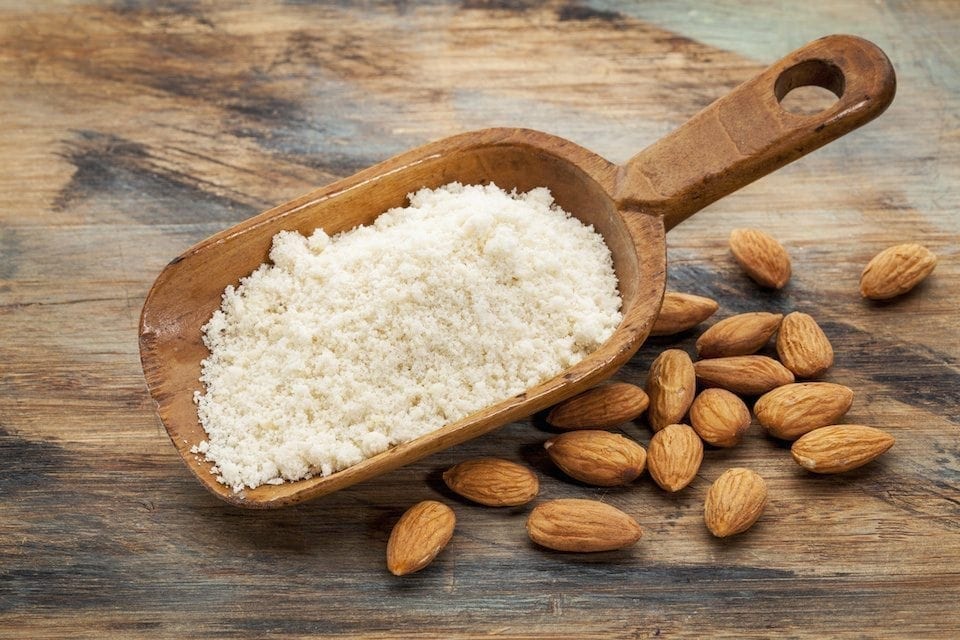If you have celiac disease or a wheat allergy, you have to pay close attention to you ingredients. When regular all-purpose flour isn’t an option, try these 6 alternatives for gluten-free baking.
1. Almond Flour
Almond flour is simply blanched almonds ground into a meal. It is high in protein, heart-healthy fats, and vitamin E. When baking, use almond flour in dense baked goods, such as these gluten-free brownies. You can also use almond flour as a replacement for bread crumbs in recipes, such as in meatballs or as coating for chicken or fish. It’s best stored in the fridge or freezer.
2. Rice Flour
Rice flour is made from finely milled rice, and comes in both white and brown varieties. It is a great substitute for wheat flour from a textural perspective so it can be used in traditional baked goods like breads. It is also commonly used in Japanese cuisine to make rice noodles and traditional Japanese desserts.
3. Amaranth Flour
Amaranth is often considered a grain, but it is actually a seed that dates back 8,000 years. It was a food staple and used in religious rituals for the ancient Aztecs, which is why it is often referred to as “the grain of the gods.” It’s made by grinding the seeds into a dust that is rich in fiber and is also a complete protein. It has a slightly earthy, nutty taste and can be used in cookie recipes; however, it may produce a drier batter. You can add some extra water, oil, or applesauce to counteract this effect and get the batter to the desired consistency.
4. Potato Flour
Potato flour is ground from dehydrated potatoes and is a natural source of B vitamins and fiber. Since potato flour attracts and holds water, it is great for producing moist baked goods such as breads, pancakes, and waffles. It also makes a great thickening agent for sauces and soups.
5. Buckwheat Flour
Buckwheat is a whole grain and grinding it produces buckwheat flour that is darker in color and has a rich, nutty flavor. It’s high in fiber and a good source of calcium and protein. The distinctive flavor makes it great in bread or muffin recipes (and fun fact: it’s used to make traditional Russian blini as well!).
6. Chickpea Flour
Chickpea flour is a great source of protein, fiber, and iron. It is commonly used in Middle Eastern and Indian cooking to make things like socca and falafel. If you mix it with a little water, you can create a super easy hummus. Since it does have a noticeable chickpea flavor, use it in baked goods that have strong flavors, such as fudge brownies or pumpkin bread. It is also great in savory baked items like pizza crust.




